By Michael E. Haskew
The ongoing debate between German Field Marshals Erwin Rommel and Gerd von Rundstedt over how best to use the German Army’s elite panzer divisions against the coming Allied invasion ultimately reached no clear conclusion.
That inability to agree proved disastrous in the final year of the war as Hitler himself took control of the deployment of the armor.
The panzer and panzergrenadier divisions of the Waffen SS were also caught up in the strategic discussions, slowing their orders to Normandy in response to the D-Day invasion of June 6, 1944. That delay ultimately contributed to their destruction. In the meantime, however, the SS panzer and panzergrenadier divisions that did confront the Allied lodgement in Normandy in the summer of 1944 fought hard and long, impeding the advance of the British and Americans, but paying a terrible price. Once committed these divisions were true to their reputation as fierce, fanatical combat formations dedicated to Nazi ideology and men willing to die for their Führer.
And they did die, thousands of them, under a relentless storm of artillery, air attacks, naval gunfire, and the thrusts of Allied ground troops toward the frontier of the Third Reich. Nevertheless, the Waffen SS exacted a heavy toll in lives and equipment while sacrificing its strength to halt the enemy in Normandy. Highly motivated and led by dedicated veteran officers, the Waffen SS soldier was deployed with the best weaponry available. From early June to late August 1944, no fewer than six Waffen SS divisions—1st SS Panzer Division Leibstandarte Adolf Hitler, 2nd SS Panzer Division Das Reich, 9th SS Panzer Division Hohenstaufen, 10th SS Panzer Division Frundsberg, 12th SS Panzer Division Hitlerjugend, and 17th SS Panzergrenadier Division Götz von Berlichingen—were joined by the 101st and 102nd SS Heavy Panzer Battalions in the death struggle.
The SS panzer divisions were equipped with tanks that had been proven superior to Allied types in tank-versus-tank combat. The 29-ton PzkPfw. IV medium tank, workhorse of the German formations, mounted a 75mm cannon, while the 45-ton PzKpfw. V Panther, perhaps the best all-around tank of World War II, was outfitted with the long-barreled high-velocity 75mm cannon, and the 56-ton PzKpfw. VI Tiger mounted a deadly 88mm high-velocity cannon.
The German guns generally possessed greater range than those of Allied tanks, and the heavier armor protection of the German armored fighting vehicles offered enhanced survivability. The panzergrenadiers, or armored infantrymen, were equipped with the reliable Mauser K98k bolt action rifle, squad level automatic weapons such as the MP-38 and MP-40 submachine guns, the first-generation assault rifle known as the Sturmgewehr 43, and the superb MG-34 and MG-42 machine guns, which possessed cyclical rates of fire well above those of any Allied weapon.
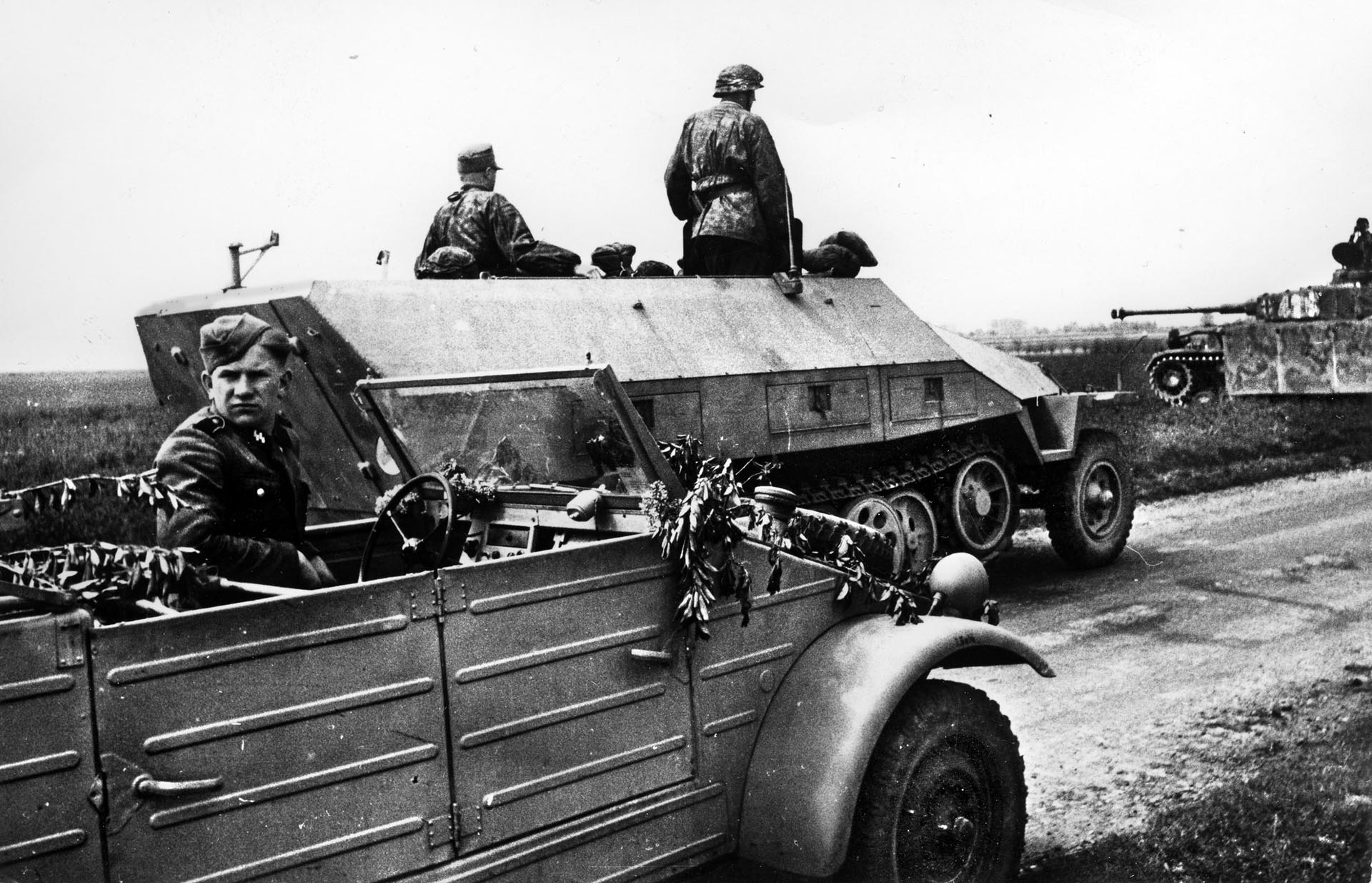
The defending SS troops and German Army troops in Normandy held two additional advantages. The first was the hedgerow country, or bocage—centuries-old earthen mounds that divided fields and pastures in peacetime but in wartime provided excellent concealment and turned every country lane in Normandy into a killing ground. Secondly, the SS soldier was defending his Fatherland—imbued with Nazi ideology, the concept of defeat was unimaginable for him.
However, the SS formations and others throughout France were restricted in their movement during the critical early phase of the battle for Normandy. Tactical commanders were prohibited from engaging the enemy at full strength without permission from Hitler, who slept until 10 a.m. on the morning of June 6 and refused to allow the immediately available armored reserve, the 12th SS Panzer Hitlerjugend and the army’s Panzer Lehr Divisions, to move forward until late in the afternoon. Only the tanks of the veteran 21st Panzer Division counterattacked in any strength on D-Day, driving through a gap between two of the British invasion beaches to the English Channel coast before lack of reinforcements to exploit the gains compelled it to retire.
As the early hours ticked away, the opportunity to destroy the Allied beachhead in Normandy faded as well. Rather than mounting a concerted armoured counterattack, the Germans were forced to commit their tanks piecemeal in the face of growing Allied strength. Nevertheless, they blunted the spearheads of British General Bernard Montgomery’s attempts to capture the city of Caen, seven miles from the coast and dominating an open plateau that provided favorable terrain for tanks all the way to Paris. Although Caen was a British D-Day objective, their failure to capture the city brought on a brutal fight that lasted a month. The panzers were further stretched to contain the American drive under General Omar Bradley to capture the town of Carentan to the west and then strike across the neck of the Cotentin Peninsula to isolate the major French port of Cherbourg.
The 2nd SS Panzer Division Das Reich was ordered north from Toulouse in southern France, but its movement was seriously hampered by the French Underground, which sabotaged rail lines and harassed the division the entire way. Allied fighter bombers also exacted a heavy toll in men and tanks, delaying the arrival of Das Reich in Normandy until June 12. The 17th SS Panzergrenadier Division Götz von Berlichingen experienced similar delays before reaching Carentan on June 11, and the 1st SS Panzer Division Leibstandarte Adolf Hitler was held north of the Seine River as the Germans still believed the major Allied landing might take place at the Pas de Calais. The Leibstandarte was not ordered to Normandy until late June, its vanguard arriving on the night of the 27th. The heart of the Leibstandarte did not reach Normandy until the first week of July.
At 5 p.m. on June 6, nearly a full day after the Allied landings in Normandy had commenced, the 12th SS was set in motion from Lisieux, its 20,540 troops aboard 229 tanks, 658 halftracks and self-propelled assault guns, and roughly 2,000 trucks. Allied air attacks and streams of refugees slowed its progress during a 65-mile trek. By sundown, only about 30 percent of its strength had reached the marshalling area southwest of Caen. The Hitlerjugend, formed in 1943 and comprised of young men of the Hitler Youth born during the first six months of 1926, had not seen action previously and was spoiling for a fight.
The tip of the Hitlerjugend spear was the 25th Panzergrenadier Regiment under Colonel Kurt “Panzer” Meyer, which came up on the left of 21st Panzer, facing the Canadian 3rd Division. Meyer commanded a battalion of PzKpfw. IV tanks and three infantry battalions. He climbed to the top of a tower at the Abbey of Ardenne on the western outskirts of Caen and peered through his field glasses. Canadian tanks and infantry were moving toward Carpiquet airfield. He smiled, “Little fish! We’ll throw them back into the sea in the morning.”
At approximately 10 a.m. on June 7, Meyer was ready to attack. A column of Canadian tanks rumbled past, and he waited until they topped a ridgeline south of Franqueville, barely 200 yards from his hidden tanks, antitank guns, and panzergrenadiers. Then, he gave the order to fire. One German soldier remembered, “The lead enemy tanks began smoking, and I saw how the crews bailed out. Other tanks exploded in pieces in the air. A panzer Mark IV suddenly stopped, burning, tongues of flame shooting out of the turret.”
The ferocity of the Hitlerjugend ambush drove the Canadians back two miles before Allied artillery and naval gunfire disrupted the pursuit. The big Allied guns destroyed at least six German tanks, while Canadian antitank guns fought back as the 3rd Division regrouped around the town of Buron. One German tank erupted in flames, and a horrified SS soldier recalled, “The shell tore off the tank commander’s leg, SS Scharführer Esser, but I heard he got out of the turret later. Phosphorous shells caused the tank to instantly burst into flames all over. I was helpless. I made my way back with third degree burns, toward our grenadiers following up. They recoiled from me on sight as if they had seen a ghoul.”
The fanatical soldiers of the Hitlerjugend had succeeded in stalling the Canadian drive. During their baptism of fire, they had destroyed at least 28 Canadian tanks, and when the division commander was killed by Allied naval bombardment, Meyer was promoted to lead the entire 12th SS Panzer Division.
The following day, Field Marshal Rommel, commander of German Army Group B, organized a major armored thrust to rupture the Allied lodgement, committing the 12th SS and the 21st Panzer and Panzer Lehr Divisions from the army. Devastating Allied naval gunfire and inadequate command and control doomed the attack, while a British armored advance had been scheduled for the same timeframe and added to the general confusion.
Convinced that the opportunity to throw the Allies into the English Channel had passed, Rommel transitioned to a defensive posture, deploying nearly 600 tanks, including those of the 12th SS, on a front from Caen to Caumont in the east, while fewer than 100 were positioned near the western invasion beachhead. The 12th SS anchored positions north and west of Caen, an antiaircraft battery and the 1st Battalion, 26th Panzergrenadier Regiment along with 15 tanks tasked with holding Carpiquet airfield.
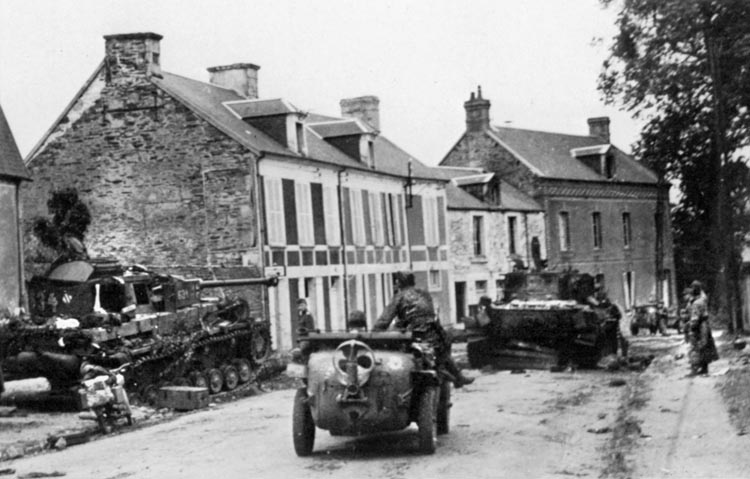
Seizing the initiative, Montgomery launched an attack with his veteran 7th Armoured Division, the famed “Desert Rats” of the North African campaign. Intent on driving the Germans out of Caen—and drawing the enemy armor onto his own front to assist the Americans further west in their efforts to break out of the beachhead—Montgomery focused on Hill 112, a commanding position just south of Carpiquet. On June 12-13, the British spearhead raced around the flank of 21st Panzer and into the hamlet of Villers-Bocage, threatening the rear of Panzer Lehr.
However, on the morning of the 13th a stark reversal sent the British reeling. The 101st SS Heavy Tank Battalion, a component of the I SS Panzer Corps later attached to the 1st SS Panzer Division Leibstandarte, had run the gauntlet of Allied fighter bombers from near Lisieux, and at the head of a reconnaissance element Lieutenant Michael Wittmann, commander of its 2nd Company, stood in the turret of his Tiger tank, watching a British armoured column exiting Villers-Bocage and pulling to the side of the national highway near the crest of Hill 213, which dominated the road to Caen.
Wittmann was already a legend in the German armed forces, an armor ace on the Eastern Front with 117 kills against Red Army tanks to his credit and the Knight’s Cross at his throat.
Singlehandedly, Wittmann burst from cover on the opposite side of the hill and attacked the armoured vehicles of the 4th County of London Yeomanry and its accompanying 1st Battalion, Rifle Brigade. Wittmann destroyed the leading halftrack, rumbled along a parallel cart path and knocked out the rear tank. He then ravaged the vehicles trapped in between.
Within minutes the British column was a shambles as plumes of smoke twisted skyward. Joined by three more Tigers and a lone PzKpfw. IV, Wittmann rolled into Villers-Bocage, where other targets were blasted. British antitank guns got into action and disabled three German tanks. Wittmann’s Tiger lost a track. He dismounted, evaded capture, and later returned to the scene with other tanks. When the fighting at Villers-Bocage ended, 25 British tanks and 28 other armored vehicles had been destroyed. Wittmann was personally credited with 11 tanks and 13 other vehicles.
Meanwhile, the Hitlerjugend battered the British 6th Armoured Regiment at Les Mesnil-Patry, destroying 37 tanks in a fight that finally ended on June 14. Elements of Panzer Lehr and Das Reich, finally on the field in strength, stabilized the front around Caen, extinguishing any Allied hope of capturing the city by swift maneuver.
To the west, American paratroopers of the 101st Airborne Division pushed the remnants of the German 6th Parachute Regiment out of Carentan after a bloody street brawl, allowing the U.S. V and VII Corps to consolidate a 60-mile front stabbing 10 miles deep into coastal Normandy. On June 10, a handful of American paratroopers from the 82nd and 101st Airborne Divisions, some of whom had come to earth far from their designated D-Day drop zones, stymied the thrust of the 17th SS Panzergrenadier Division Götz von Berlichingen toward Carentan to support the defenders. The lightly armed Americans lost 32 men killed but held up the panzergrenadiers for two precious days.
The delay had been costly, but the 17th SS and 6th Parachute mounted a fierce counterattack on June 13. SS Panzergrenadier Regiment 37 engaged the 502nd and 506th Parachute Infantry Regiments, 101st Airborne, about a mile southwest of Carentan near Hill 30. The outgunned Americans were about to be overrun when 60 tanks of Combat Command A, 2nd Armored Division supported by infantry from the U.S. 29th Division stopped the Germans, securing Carentan and the linkup of the two American corps. Known as the “Battle of Bloody Gulch,” the sharp action cost the Germans four tanks, 43 killed, and 89 wounded. For the rest of the month, the 17th SS battled the Americans around St. Lo and Coutances, losing more than half its strength.
The bitter battle for Caen continued virtually without respite. On June 22, the British 11th Armoured Division thrust southward again toward Hill 112 and collided with the battered Hitlerjugend. Still full of fight, the teenage fanatics sacrificed themselves. Twenty-year-old SS panzergrenadier Emil Dürr unleashed a shoulder-fired Panzerfaust antitank weapon against a British M4 Sherman medium tank. Setting the tank on fire, he rushed forward and threw a “sticky bomb” against its side. When the explosive failed to adhere, Dürr clutched the charge against the side of the tank, killing himself with its detonation.
Meanwhile, Hitler ordered the II SS Panzer Corps, including the 9th and 10th SS Panzer Divisions, to disengage from the Red Army in Ukraine and move to Normandy. They prepared a major counterattack and intended to relieve the depleted 12th SS and Panzer Lehr.
However, Montgomery mounted Operation Epsom, a major push to take Caen from the west, on June 26. He deployed three infantry divisions and two armoured brigades with the fire of more than 700 artillery pieces in support. The Hitlerjugend fought with grim determination, but the British captured Hill 112 on June 28.
Colonel Meyer wrote of the intense combat near the town of Fontenoy. “The tank versus tank action starts. Thick, black, oily smoke rolls over the battlefield. Battle weary grenadiers wave to me yelling out jokes, their eyes shining. It mystifies me where these youngsters are getting the strength to live through such a storm of steel. They assure me again and again that they will defend the rubble to the last round and will hold their positions against all comers.”
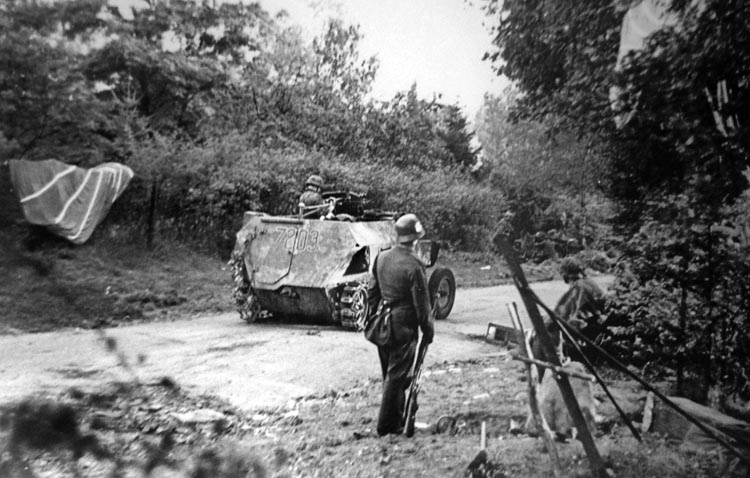
The 9th and 10th SS Panzer Divisions arrived while Operation Epsom was underway. All thought of a German counterattack fell apart in the confusion of battle and under the accurate shelling of Allied warships off the coast. The large-caliber naval shells were capable of obliterating a German tank or tossing a big Tiger end over end like a toy. The SS counterattack, such as it was, caused the British to pause. On June 30, they withdrew from their bridgehead across the Odon River. The Scottish 15th Division had suffered more than 2,300 casualties, while the 12th SS, bled white, had lost 800.
In early July, the American VIII Corps struck south toward Coutances and managed to advance only seven miles in 12 days when two battalions of Das Reich fought beside the 15th Parachute Regiment, inflicting about 10,000 casualties on the attackers. At the same time, the VII Corps advanced southwest from Carentan and ran into a meatgrinder. The U.S. 4th Infantry Division alone lost 2,300 killed and wounded in combat with the 17th SS Panzergrenadier Division and the 6th Parachute Regiment. The performance of the 17th SS was remarkable. It was not fully combat ready when summoned to Normandy from Thouars. Forty percent of its officers and non-commissioned officers had not reached the combat zone. Its tanks and assault guns had also arrived in piecemeal fashion due to lack of transport and Allied air interdiction. By late June, it had lost 900 casualties and one of its panzer regiments fielded only 18 self-propelled assault guns.
Despite the stand of a battle group that included a regiment of the 17th and three infantry battalions, the U.S. XIX Corps made rapid progress toward the town of St. Lo before Das Reich temporarily halted the advance. Panzer Lehr counterattacked but retired under heavy air attack. St. Lo fell to the Americans on June 18, and though Allied progress in Normandy was sluggish, the Germans formations were losing combat efficiency swiftly, forced to fight like fire brigades, parrying every Allied thrust.
Stepping up the pressure, the British renewed their effort to take Caen on July 8. During Operation Charnwood, the 3rd Canadian Division fought panzergrenadiers for control of Carpiquet, while the remnants of Hitlerjugend were pounded from the air with 2,600 tons of Allied bombs. Caen was devastated and the British lost 103 tanks while fighting amid the rubble. One 12th SS crew exemplified the ferocity of the German defense, destroying three British tanks, firing its last round, and dying to a man in its gun pit during hand-to-hand fighting.
At long last, Colonel Meyer defied a stand fast order from Hitler and withdrew what was left of the Hitlerjugend because he could not “watch those youngsters being sacrificed to a senseless order.” After Charnwood, the 12th SS counted only a few hundred infantrymen and 40 of its original complement of 150 tanks.
A week later, Montgomery launched Operation Goodwood, intended to complete the capture of Caen. After a heavy air bombardment, British tanks rolled southward toward Bourguébus Ridge, where the Germans had assembled a breakwater of more than 500 field guns with a mobile reserve of roughly 80 tanks. By afternoon, a counterattack from the 1st SS Leibstandarte and 21st Panzer stopped the British. The Leibstandarte’s 2nd Battalion, 1st SS Panzer Regiment moved 13 Panther tanks forward, engaging 60 British tanks and destroying 20 while occupying the village of Soliers. The 1st Battalion, 1st SS Panzer Regiment fought the British 9th Armoured Brigade to a standstill. The Germans held the ridge for two more days, withdrawing only after destroying 500 tanks, more than 30 percent of the British armored strength in Normandy. Montgomery at last claimed Caen, but the German had prevented a breakout into open country.
By late July, weeks of hard fighting had shredded the panzer divisions of the SS and German Army in Normandy. Nevertheless, Allied formations remained hung up in the bocage and unable to execute a rapid advance across France to the German frontier. On July 25, Operation Cobra changed the dynamic of the campaign. Following saturation bombing, three American divisions plunged through the German lines. Panzer Lehr was virtually annihilated. Das Reich and the 17th SS Panzergrenadier Divisions fought stubbornly, but the floodgates had opened. British progress outside Caen was slow, but the American drive threatened to completely outflank the Germans in Normandy.
On August 7, the Germans commenced a desperate effort to cut off the American advance at its narrowest point near the town of Mortain. Das Reich, the Leibstandarte, and elements of the 17th SS joined the 2nd and 116th Panzer Divisions in a counterattack ordered by Hitler, codenamed Operation Lüttich. Immediately, the timetable of the attack, poised to hit the U.S. 30th Division, was upset as a damaged Allied plane crashed into the lead Leibstandarte tank, temporarily halting the advance. A single American infantry platoon, 66 soldiers, supported by artillery threw back an SS regiment at Abbaye Blanche. Das Reich advanced four miles, capturing Mortain and surrounding the American 2nd Battalion, 120th Infantry Regiment on nearby Hill 314 at a cost of at least 14 precious tanks.
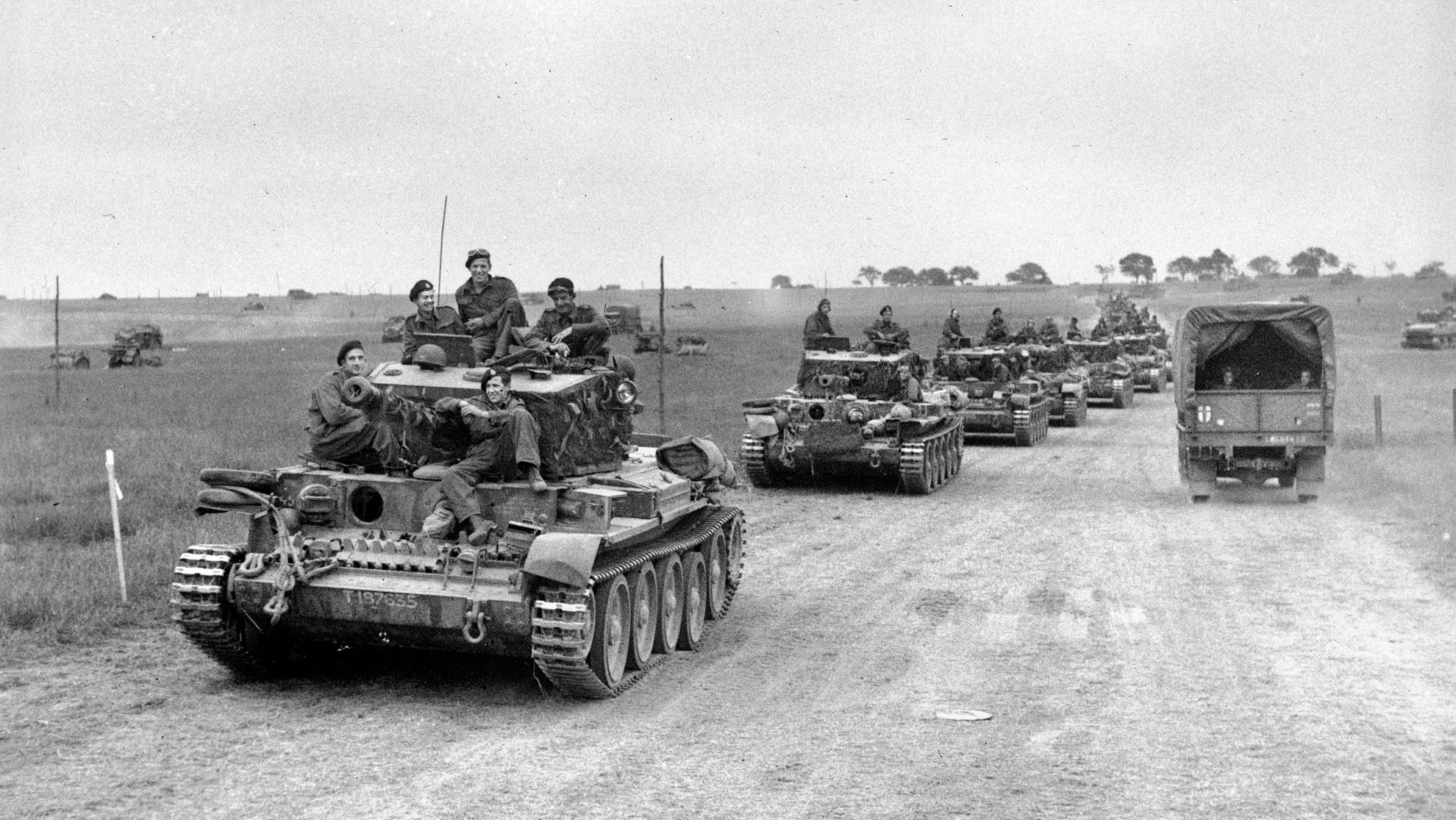
American artillery fire thwarted an attempt by soldiers of the 17th SS to claim the high ground. Resupplied by air, the Americans clung to Hill 314 for four more days. The German attack petered out elsewhere and actually contributed to a catastrophe. With the bulk of the remaining German armor concentrated in the south, the possibility for a rapid encirclement of the entire German Seventh and Fifth Panzer Armies materialized.
In the aftermath of Operation Lüttich, the Germans drew up to defensive positions around the town of Falaise. On August 8, Montgomery launched Operation Totalize toward this concentration, two armored divisions leading the way. Once again, the British and Canadian forces ran into the depleted 12th SS. After two days of bitter fighting, Montgomery was short of his objective, but the northern shoulder of a giant Allied pincer was nearly closed.
Roughly 100,000 German troops were trapped in the Falaise Pocket at the end of August, but 60 men of the 12th SS fought to keep the escape route open north of Argentan. After three days, four of them were captured alive. The battered Hitlerjugend and Leibstandarte fought desperately to keep the gap open, allowing up to 40,000 soldiers to elude capture. The Leibstandarte held the southern shoulder and conducted a fighting withdrawal. On the nights of August 13 and 14, the remnants of Das Reich filtered through the Leibstandarte to a new defensive line at Champosoult. On the 16th, the Leibstandarte began its final retirement as fog cloaked the withdrawal across the River Orne.
The SS divisions in Normandy were shattered, and their losses were tremendous. The Leibstandarte had suffered 5,000 casualties and abandoned nearly all its remaining tanks and artillery during the retreat at Falaise. The 9th SS Panzer Division lost half its strength, about 9,000 men, and the 10th SS Panzer had been reduced to four battalions of infantry and not a single tank. The 17th SS was broken into battlegroups around the city of Metz after escaping the Falaise Pocket. Das Reich could muster only 15 tanks and 450 soldiers. Army Group B reported on August 22 that the 12th SS Panzer Division Hitlerjugend had ceased to exist as a fighting force, utterly destroyed in Normandy with but 300 soldiers and 10 tanks.
Months of bitter fighting lay ahead, but the losses suffered among the SS panzer and panzergrenadier formations in Normandy were irreplaceable.
Michael E. Haskew, editor of WWII History, is the author of numerous books and articles on military history. He resides in Chattanooga, Tennessee.
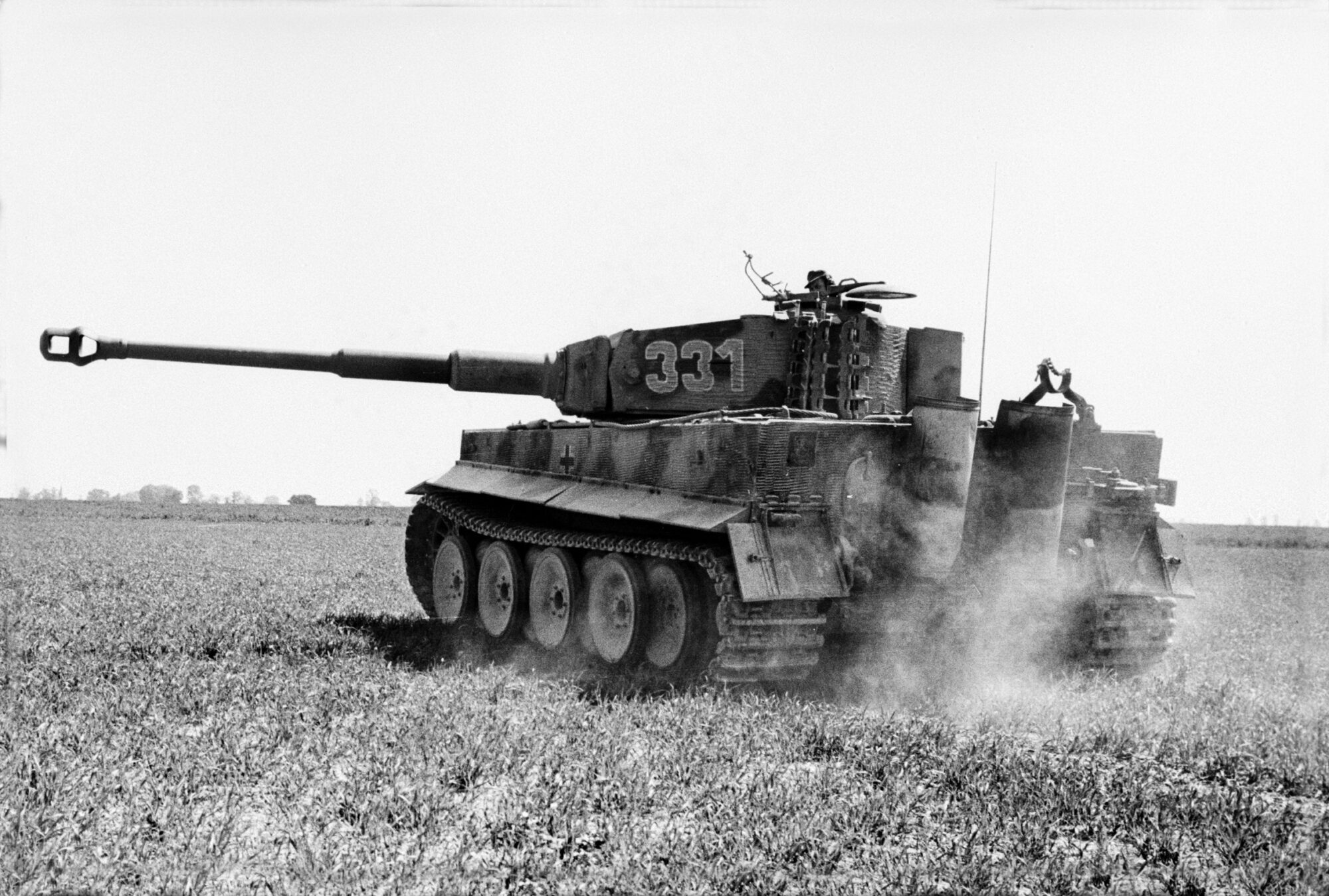
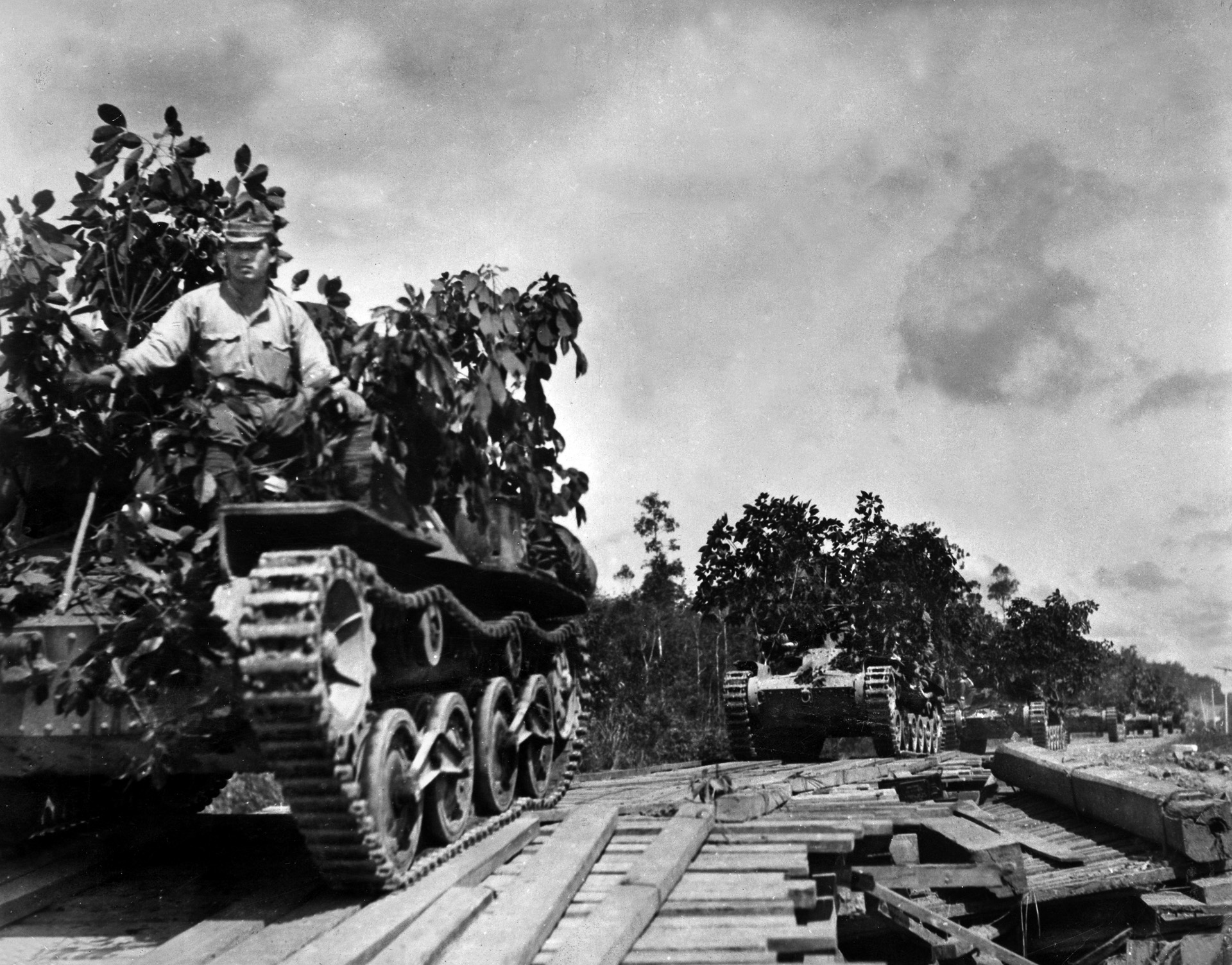
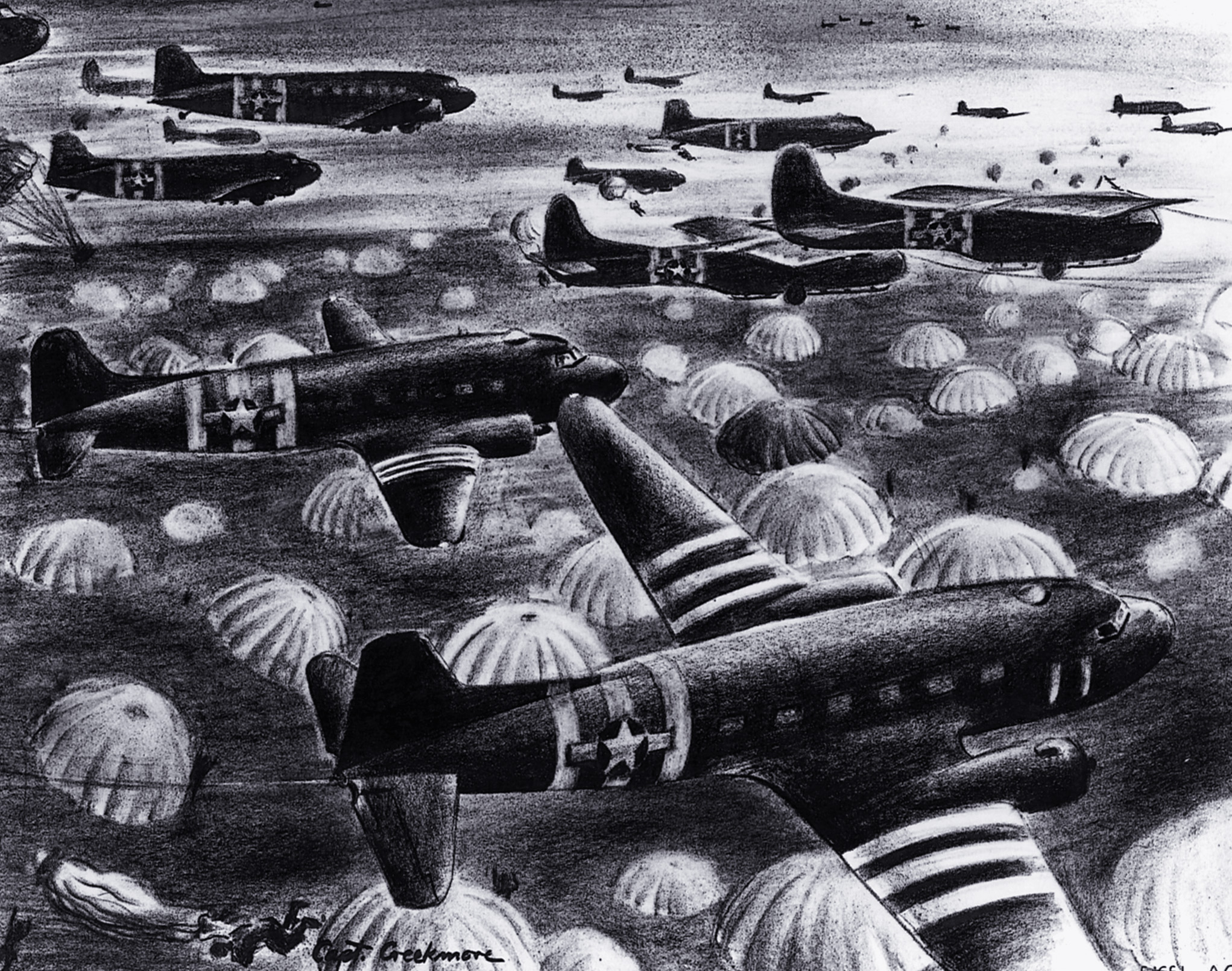
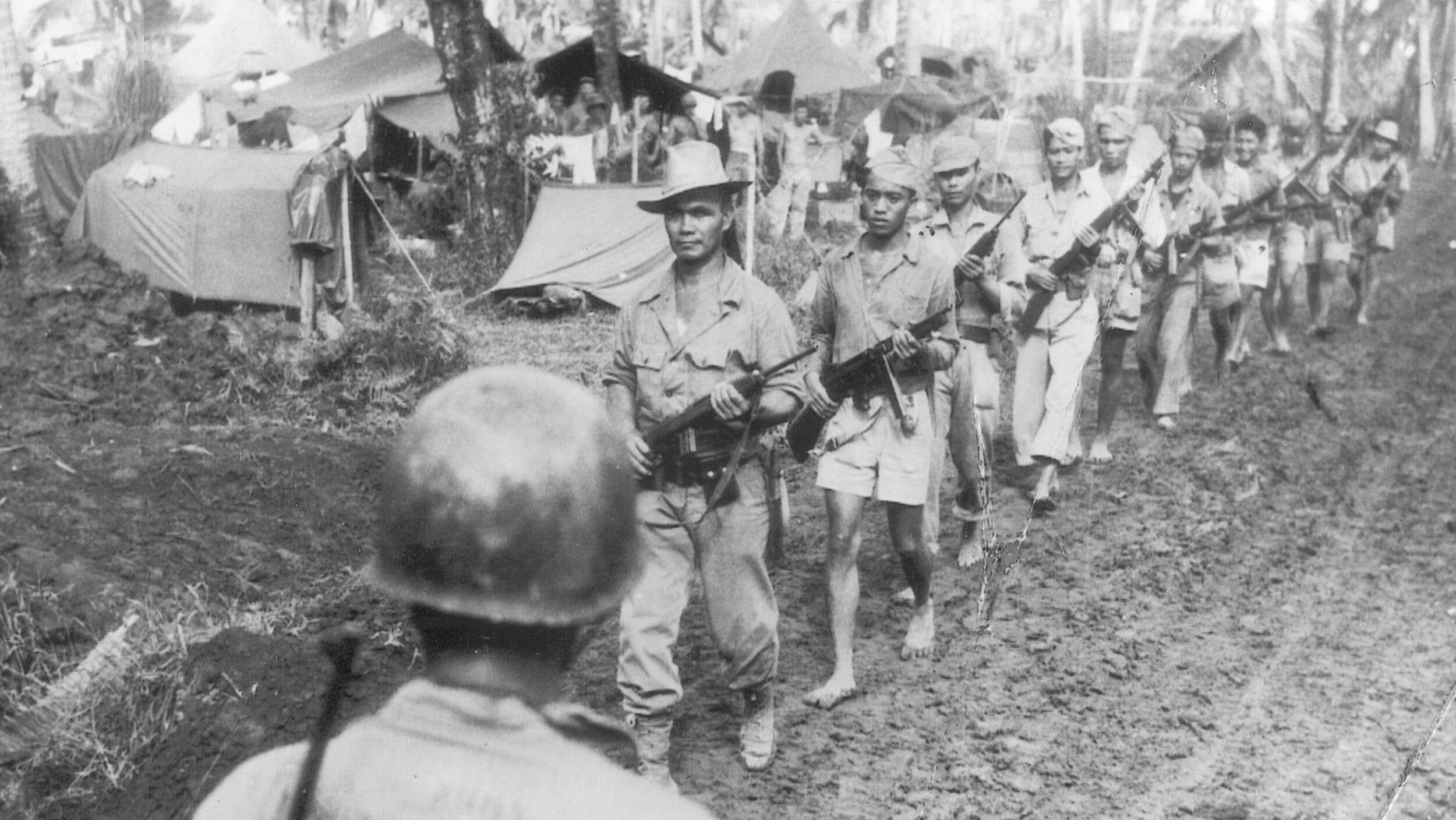
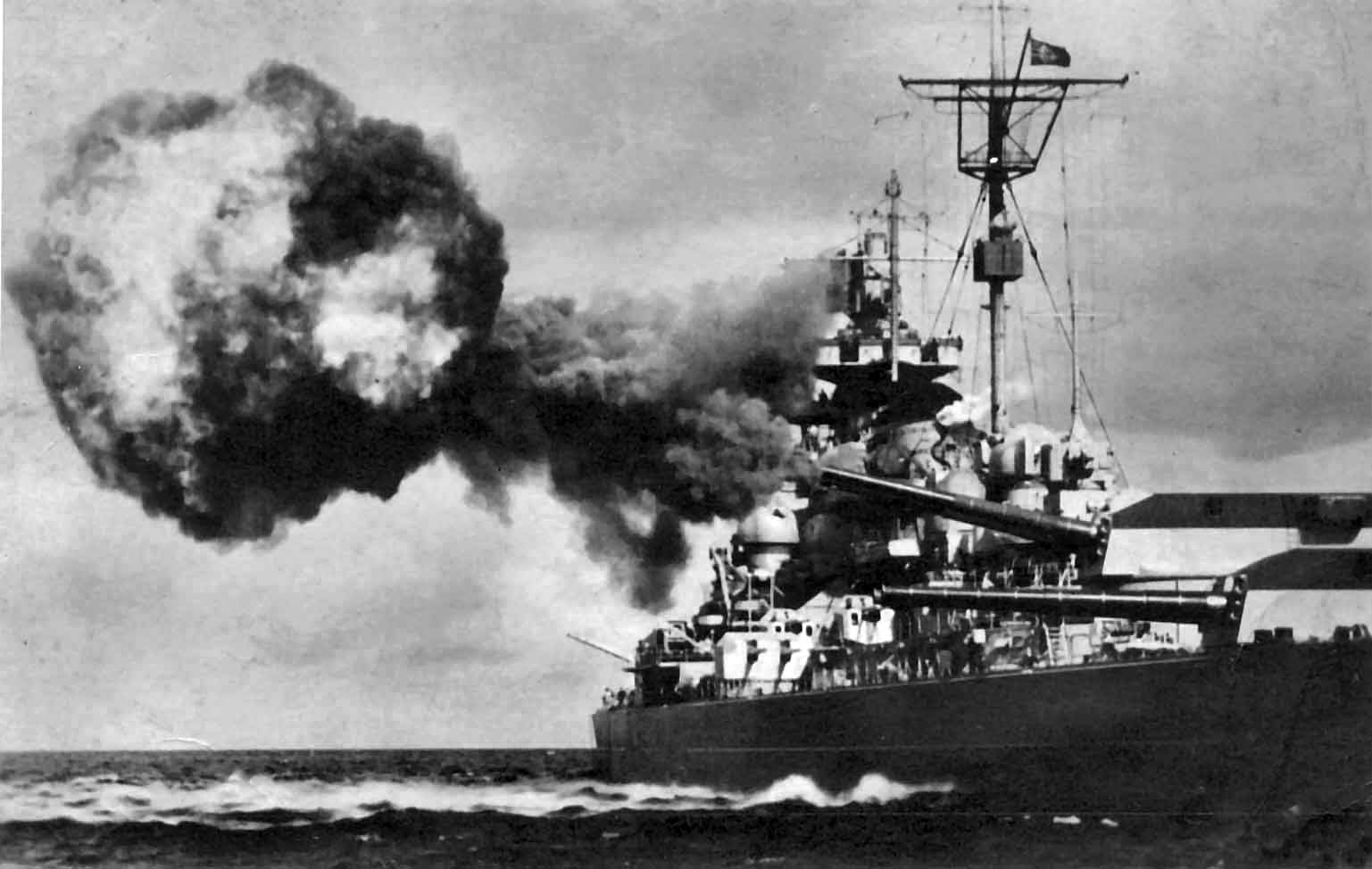
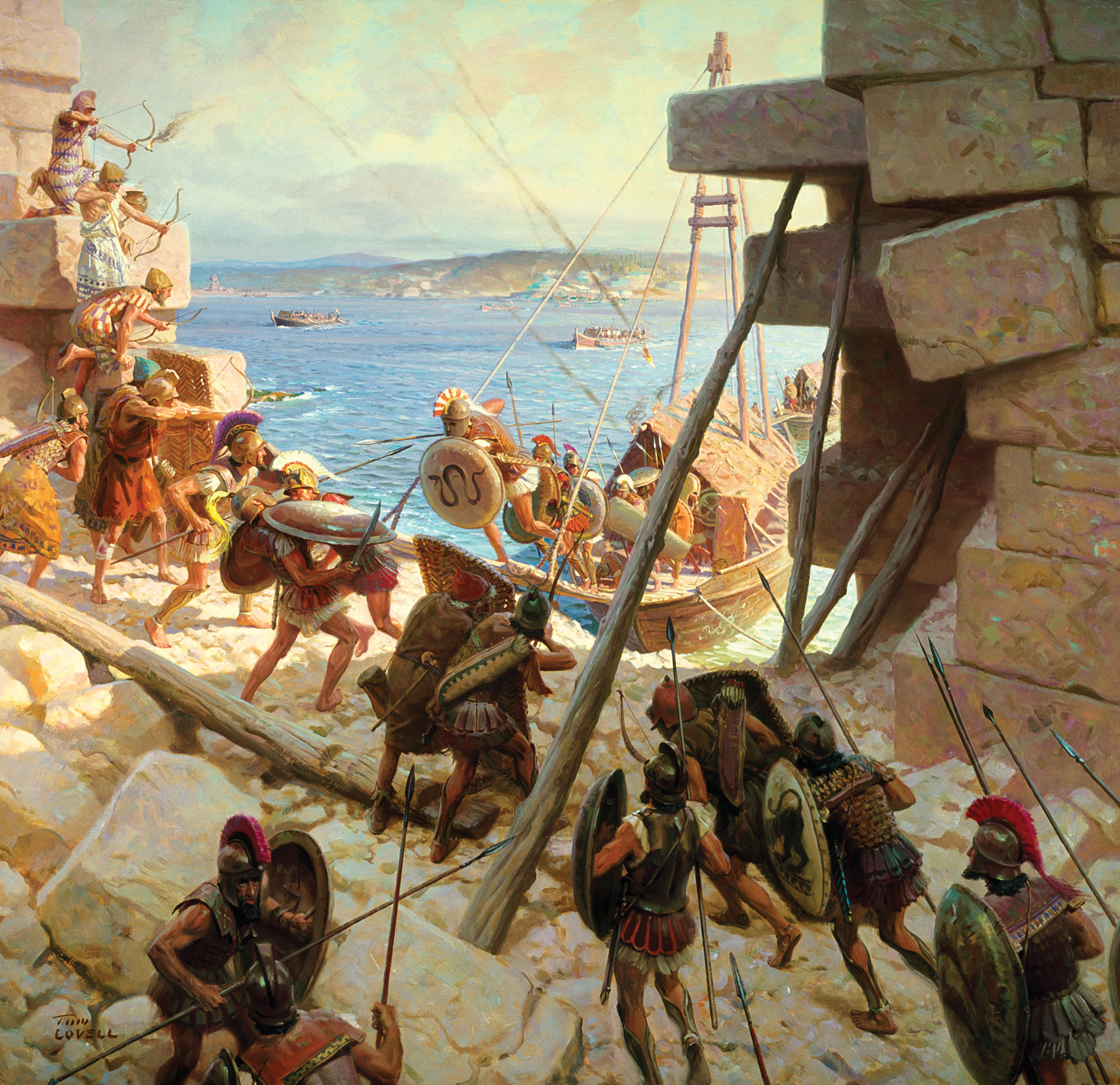
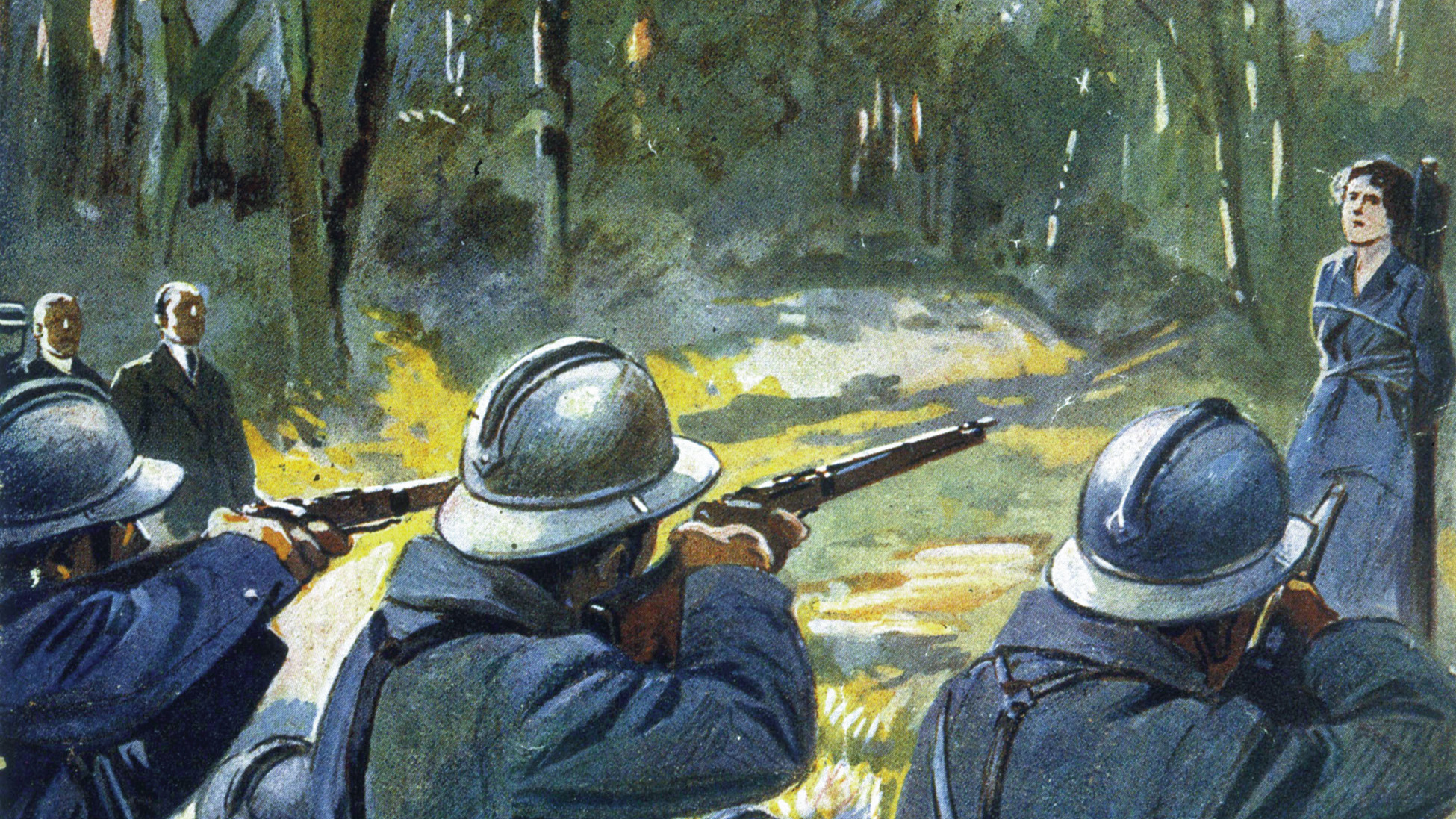
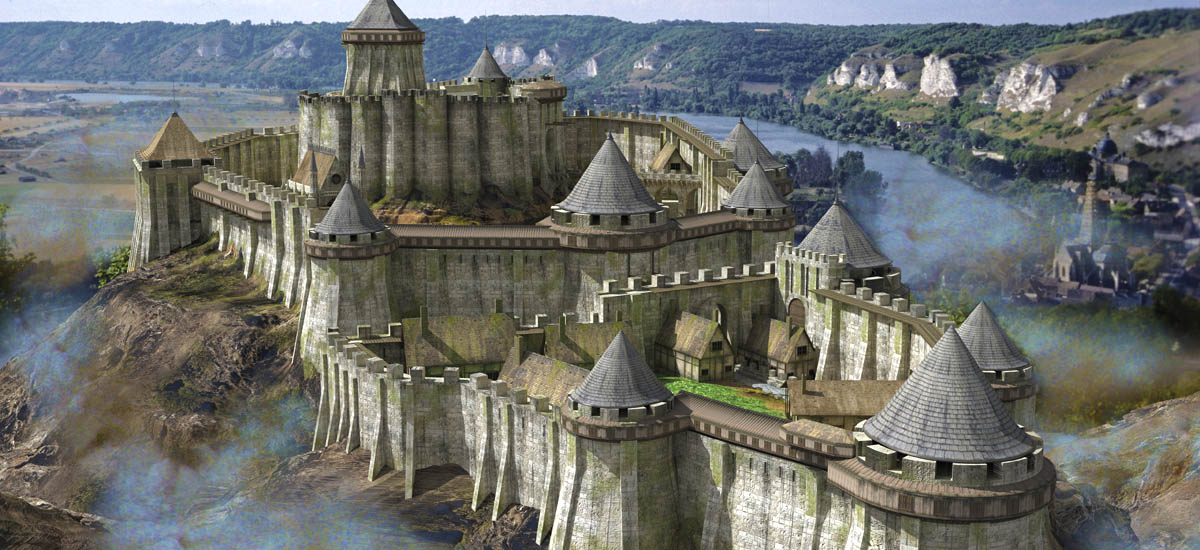
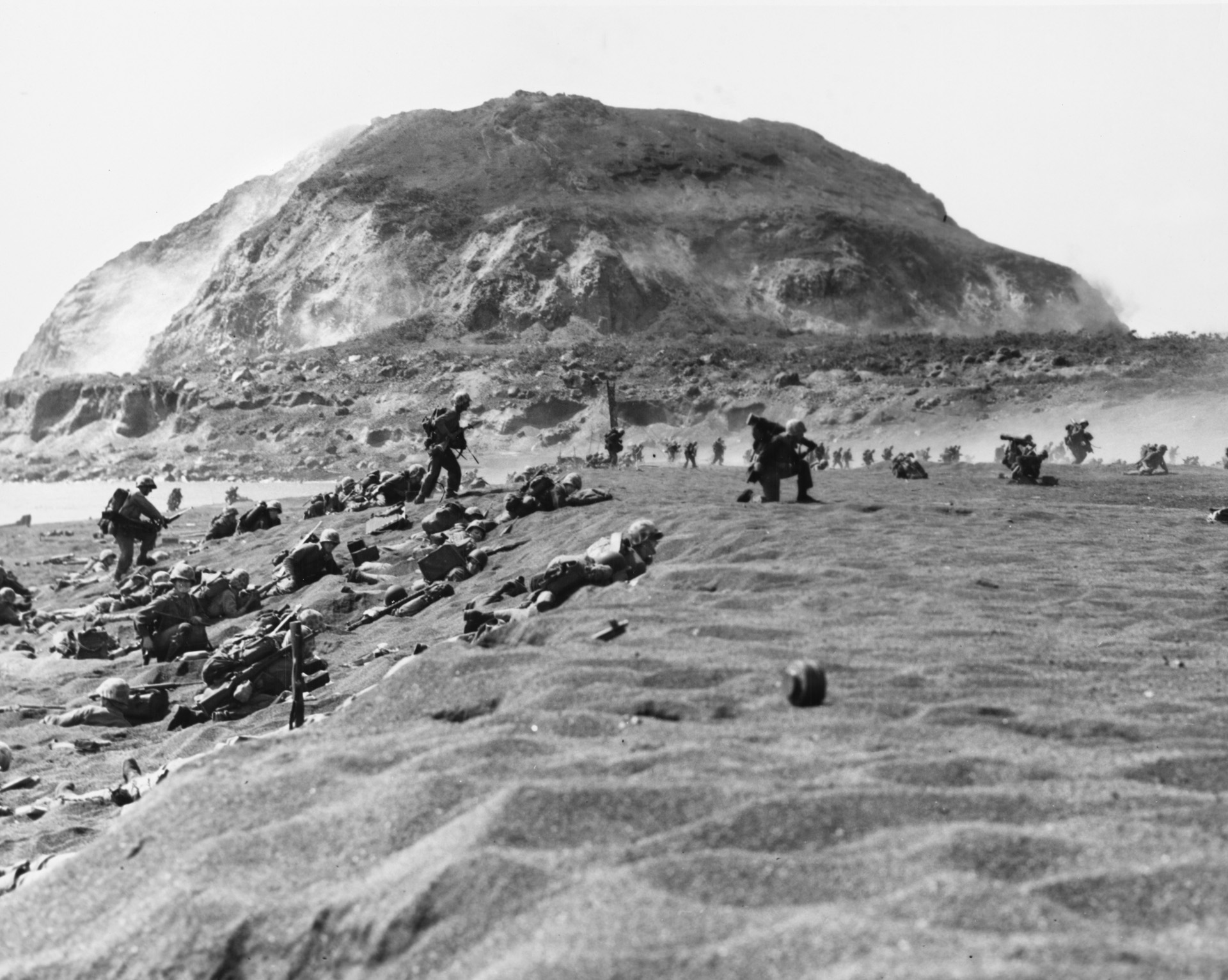
I find this article full of errors. Example. 12SS arrives with 229 tanks but at the end of the battle has only 10 left from 150. “..12th SS counted only a few hundred infantrymen and 40 of its original complement of 150 tanks.” 229 is definitely wrong. Did you mean armored fighting vehicles such as tanks and StuG? It didn’t have its Panzerjager IV/L48 available when it arrived so where did it get the extra tank battalion?
17SS didn’t have any tanks, only assault guns, and not a Panzer Regiment, a StuG IV battalion.
There is more misinformation.
I don’t think this article meets the quality standards your magazine should be enforcing.
Mike Reese